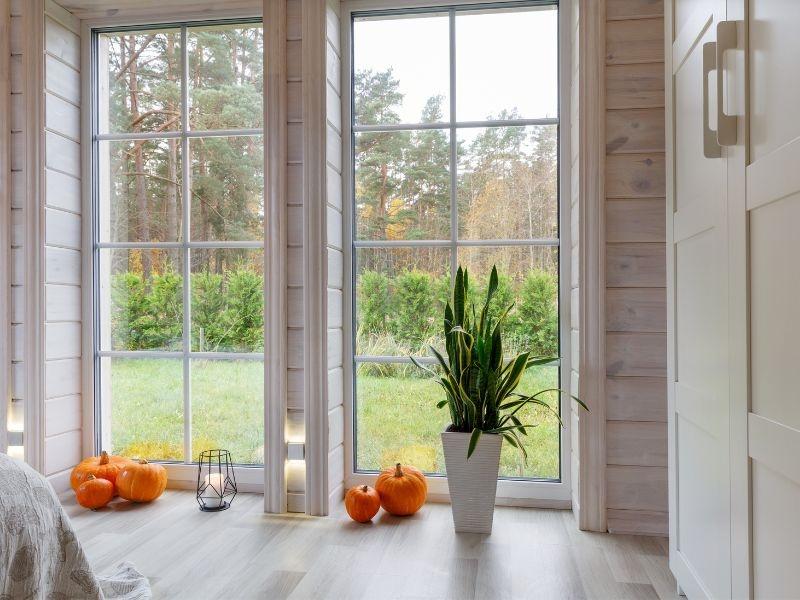
In a world where energy efficiency is more than a choice—it's a responsibility, the role of windows in our buildings has dramatically evolved.
No longer just a pane to admire views or let in light, modern windows are vital players in maintaining a building's energy balance, significantly impacting both comfort and cost. This article builds upon our learnings as one of the leading modern window installation & repair companies in Western Mass for over two decades with insights and facts to help you make an informed decision.
The Science Behind Energy-Efficient Windows
Understanding energy-efficient windows starts with a bit of science. It's all about heat transfer. Traditional windows often act as weak points, letting heat slip into or out of a building. Here's where the 'U-value' enters the conversation—it measures how well a window prevents heat from escaping. The lower the U-value, the greater a window's resistance to heat flow and the better its insulating value.
Key Features of Energy-Efficient Modern Windows
Modern windows come packed with features designed to minimize energy loss:
Double and Triple Glazing:
Imagine multiple layers of defense against heat transfer. That's what double and triple glazing offer. These windows have two or three glass panes with space in between, creating insulating barriers that stabilize indoor climates.
Low-emissivity (Low-E) Coatings
These invisible coatings are unsung heroes, reflecting heat to their source and keeping interiors cool in summer and warm in winter.
Gas Fills
Some modern windows have glazed layers separated by gases like argon or krypton. Why? They're much better at insulating than regular air, reducing the conduction and convection of heat between the panes.
Warm Edge Spacer Bars
These components sit between glass layers, maintaining a window's structural integrity and reducing heat loss around the edges. They're like the sealing touch on an energy-saving package.
The Environmental and Financial Impact
Energy-efficient windows are a win-win for the planet and your wallet. They help reduce your carbon footprint, contributing to a greener environment. But the perks don't stop there. These windows can also translate into savings on energy bills, sometimes cutting costs by up to 15%. And let's not forget the potential boost in property value, making energy-efficient windows an intelligent investment for future-forward homeowners.
Choosing the Right Energy-Efficient Window for Your Needs
Picking the perfect window isn't a one-size-fits-all scenario. It's about balancing factors like your local climate, your building's design, and your budget. The key is to consider how different window features meet your specific needs. A task made more accessible with advice from a window specialist.
Maintenance and Longevity
Good news—modern energy-efficient windows are typically low maintenance. A bit of cleaning, checking seals, and occasional professional check-ups are generally all it takes to keep them in top shape. They're built to last, often standing strong for 20 years or more, making them a long-term ally in your energy efficiency journey.
Navigating the Installation of Energy-Efficient Windows
Installing energy-efficient windows isn't just a purchase—it's an investment in your home's future comfort and resilience. However, this process differs slightly from installing standard windows, often involving advanced technology and specialized materials.
-
Professional Assessment: Before any installation, a professional assessment is crucial. Specialists consider factors unique to your home, such as climate, home orientation, and architectural integrity. They'll help determine the most suitable window types regarding performance and aesthetics.
-
Specialized Installation: Energy-efficient windows demand precision. Unlike regular windows, these high-performance products rely on airtight installation to prevent air leaks and ensure optimal insulation. It's not just about placing a window into a wall—it's about integrating an advanced thermal barrier system into your home's structural envelope.
-
Understanding the Costs: Be prepared: the initial costs are higher than standard windows. However, it's vital to recognize this as an investment rather than an expense. Energy savings over time, coupled with potential subsidies or tax credits, can significantly offset the upfront costs.
-
Post-Installation Care: After installation, understanding maintenance is crucial to longevity. While these windows are generally low-maintenance, ensuring seals remain intact and mechanisms function smoothly keeps performance high. Regular professional check-ups help maintain their efficiency peak.
-
Permits and Regulations: Lastly, homeowners shouldn't overlook the legal side. Depending on your location, specific permits may be required for installation. Additionally, there are often regulations and standards these windows must meet, particularly in regions with extreme climates or special environmental conditions.
Case Study: A Real-World Example of Energy Savings
Consider a recent case where a homeowner switched to energy-efficient windows and slashed their energy bills by a quarter. Beyond the savings, they enjoyed a more comfortable home environment and added curb appeal to their property. It's a practical testament to the tangible benefits these windows provide.
Conclusion
Energy-efficient windows are more than just a building trend; they respond to the global call for sustainable living. Offering environmental and financial benefits, they answer pressing questions for anyone considering an upgrade in their window setup. As we continue to strive for a balance between comfort and responsibility, these modern marvels of technology stand out as a clear step in the right direction.
